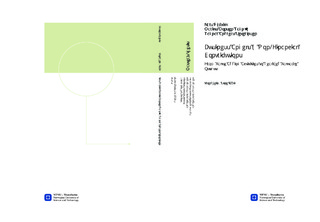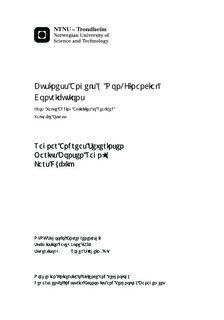| dc.description.abstract | While there exist consensus among researchers that business angels contribute with non-financial value to their investee companies, previous research on value adding activities has suffered from a lack of overview and consensus. This thesis seeks to create a general understanding of the value adding activities, how they are performed and what affects these activities. In addition we take the first step in assessing the process of realizing potential value adding, which has been indicated as a ‘black box’. Paper one is a literature study, while paper two is a multiple-case study including ten business angels where each candidate presented one or more investment cases resulting in a total of 15 business cases. Paper three is a conceptual theory-building study, which combine theoretical models from other disciplines with qualitative data from the multiple-case study Paper one conducts an extensive literature review on value adding activities performed by business angels to their investee company, in addition to explore which factors may influence these activities. We present a conceptual framework for value adding activities, and link this framework to potential factors. The findings suggest that the value adding activities may be divided between Intra-organizational activities, meaning the activities within the venture and Inter-organizational activities, meaning activities aimed at the external environment. Paper two explain how the value adding activities are performed to the investee company. We present an in-depth explanation regarding how the activities are performed, and also present a new framework for value adding activities in accordance with the findings. The findings support that value adding activities may be divided between Intra-organizational activities and Inter-organizational activities. However, in contrast to previous research, we find that Network and Legitimation are not direct activities, as Network may be seen as a channel in which Inter-organizational activities are performed, while Legitimation increases the value of this channel. Paper three assess what may influence the value adding activities. Findings suggest two major factors influencing the value adding activities; the ventures life cycle and the receptivity of the entrepreneur. We assess the Attributes of the investor, entrepreneur and company, and the Relational properties between them in the light of these two factors. In addition and stark contrast two previous research, we find that there is a difference between potential value added and realized value added, as this is a process contingent upon the entrepreneurs’ ability to acquire and exploit advice from the investor. Based on the findings we present a conceptual framework, which assesses the entire process from potential activities to realized value added. Combined, the papers presented in this thesis provide future researcher with a framework with which they may assess and analyze the non-financial contributions provided by business angels, in addition to factors influencing them. However, the main finding in paper three, which is the process of realizing potential value added, is of essence when assessing non-financial contributions. It should therefore be included in future studies on the subject, as this process needs to be fully understood in order to comprehend, and increase the efficiency of, the informal capital market. | nb_NO |

